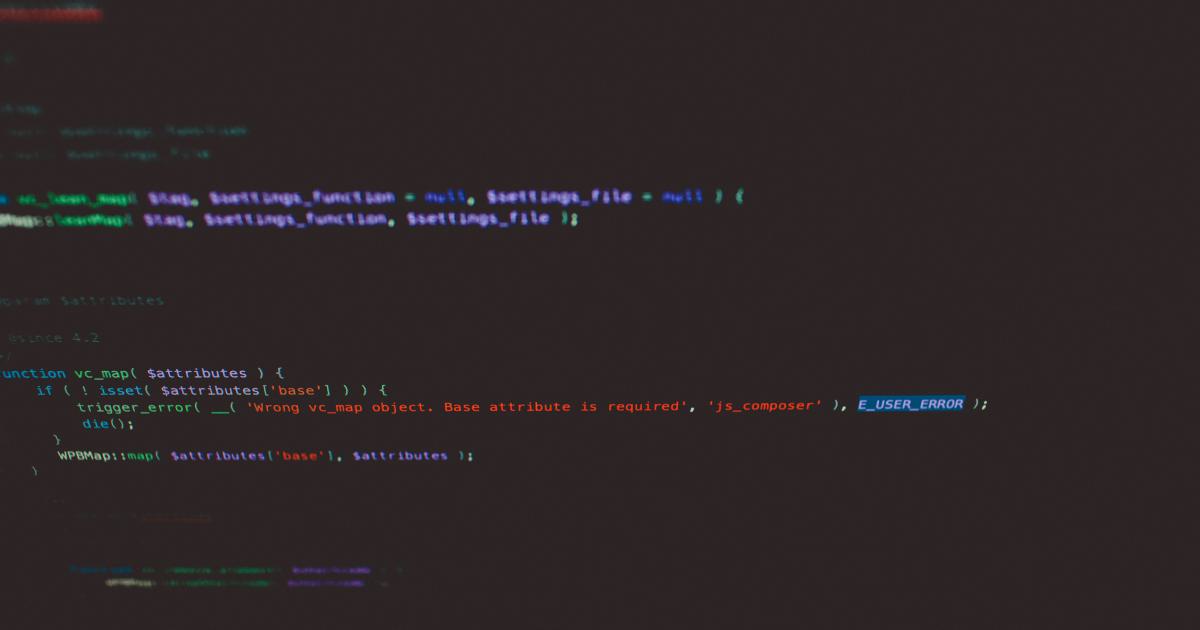Unleashing the Power of Headless Crawling Techniques


Introduction to Headless Crawling
In the ever-evolving digital landscape, where the volume of online content continues to expand exponentially, traditional web crawling techniques have become increasingly challenged. Conventional crawlers, designed to navigate and index websites in a linear fashion, often struggle to keep pace with the dynamic nature of the modern web. Enter headless crawling, a revolutionary approach that harnesses the power of sophisticated technologies to unlock new possibilities in web data extraction and analysis.
Headless crawling, at its core, involves the use of a web browser that operates without a graphical user interface (GUI). This "headless" browser is controlled programmatically, allowing for the automated exploration and extraction of data from websites with a level of precision and flexibility that traditional crawlers simply cannot match. By simulating the behavior of a human user, headless crawlers can navigate complex and JavaScript-heavy websites, rendering and interpreting content precisely as it would appear in a standard web browser.

One of the primary advantages of headless crawling is its ability to overcome the limitations of conventional crawling techniques. Traditional crawlers often struggle with JavaScript-based content, as they are unable to fully execute and interpret the dynamic elements that are fundamental to the modern web. Headless crawlers, on the other hand, can fully render and interact with these dynamic pages, extracting data that would otherwise be inaccessible.
Moreover, headless crawling techniques offer a level of flexibility and control that traditional approaches simply cannot match. Developers and data scientists can customize the crawling process to target specific elements, navigate complex website structures, and even mimic user behavior to bypass anti-scraping measures. This level of granular control opens up a world of possibilities for a wide range of applications, from market research and competitive analysis to content aggregation and web monitoring.
The Rise of Headless Browsers
At the heart of the headless crawling revolution are headless browsers – web browsers that can be controlled programmatically without the need for a graphical user interface. These powerful tools have emerged as the backbone of modern web data extraction, enabling developers to automate the browsing experience and extract data with unprecedented precision.
One of the most prominent examples of a headless browser is Puppeteer, a Node.js library developed by Google. Puppeteer provides a high-level API for controlling a headless instance of the Chromium browser, allowing developers to programmatically navigate websites, interact with page elements, and extract data with ease. Puppeteer's popularity has soared in recent years, with its versatility and powerful features making it a go-to choice for web scraping and automation tasks.

Another widely used headless browser is Selenium, a powerful web automation tool that has been a staple in the software testing industry for years. While Selenium was originally designed for browser-based testing, its capabilities have expanded to include web scraping and data extraction. Selenium's flexibility, coupled with its ability to work across multiple browsers, has made it a popular choice for enterprises and developers looking to scale their web data collection efforts.
In addition to Puppeteer and Selenium, there are other headless browser options available, each with its own unique features and capabilities. Examples include Playwright, developed by Microsoft, and Cypress, a popular end-to-end testing framework that can also be used for web scraping. The abundance of headless browser options allows developers to choose the solution that best fits their specific needs and use cases.
Overcoming Website Challenges with Headless Crawling
One of the primary challenges faced by traditional web crawlers is the ability to navigate and extract data from dynamic, JavaScript-heavy websites. These sites often use complex client-side rendering and asynchronous data loading techniques, rendering them effectively invisible to traditional crawlers.
Headless crawling, however, provides a powerful solution to this challenge. By simulating the behavior of a human user and fully rendering the page, headless crawlers can access and extract data that would otherwise be hidden from view. This capability is particularly valuable for websites that rely on JavaScript to load and display content, as well as those that utilize infinite scrolling, single-page applications (SPAs), and other advanced web technologies.

Moreover, headless crawling techniques can be leveraged to overcome other common website challenges, such as:
Bypassing Anti-Scraping Measures
Many websites implement various anti-scraping measures, such as IP blocking, CAPTCHAs, and user-agent detection, to deter automated data extraction. Headless crawling, with its ability to mimic user behavior and adjust its fingerprint, can often circumvent these measures, allowing for more robust and reliable web data collection.
Navigating Complex Website Structures
Websites can vary greatly in their structure and layout, with some featuring intricate navigation systems, dynamic content, and convoluted URL structures. Headless crawlers, with their programmatic control and customization capabilities, can be designed to navigate these complex environments, extracting data from even the most challenging websites.
Handling Pagination and Infinite Scrolling
Websites that employ pagination or infinite scrolling to display content can be particularly challenging for traditional crawlers. Headless crawling, however, can be programmed to automatically scroll through pages, click on "load more" buttons, and extract data from each successive page, ensuring a comprehensive data collection process.
Executing JavaScript-based Interactions
Many modern websites rely on JavaScript-driven interactions, such as form submissions, dropdown menus, and modal windows, to provide an enhanced user experience. Headless crawlers, with their ability to fully execute JavaScript, can interact with these dynamic elements, unlocking data that would otherwise be inaccessible.
By overcoming these common website challenges, headless crawling techniques have become an invaluable tool for a wide range of applications, from e-commerce and market research to content aggregation and web monitoring.
Headless Crawling Use Cases and Applications
The versatility of headless crawling techniques has led to their adoption across a diverse range of industries and use cases. Let's explore some of the key applications where headless crawling is making a significant impact:
E-commerce and Price Monitoring
In the highly competitive world of e-commerce, staying informed about competitor pricing and product availability is crucial. Headless crawling can be leveraged to continuously monitor e-commerce websites, extracting real-time data on pricing, inventory levels, and product details. This information can then be used to inform pricing strategies, optimize inventory management, and gain valuable insights into market trends.

Market Research and Competitive Analysis
Headless crawling can be a powerful tool for market research and competitive analysis. By automating the extraction of data from industry-relevant websites, companies can gather valuable insights into consumer behavior, market trends, and the strategies of their competitors. This information can then be used to inform product development, marketing campaigns, and overall business strategy.
Content Aggregation and Monitoring
In today's information-rich landscape, the ability to efficiently aggregate and monitor online content is paramount. Headless crawling techniques can be employed to scrape and index content from various websites, newsletters, forums, and social media platforms. This data can then be used to power news aggregators, content curation platforms, and media monitoring services.

Web Scraping for Data Science
The field of data science relies heavily on the availability of high-quality, structured data. Headless crawling can be an invaluable tool for web scraping, allowing data scientists to extract relevant information from websites and incorporate it into their analytical workflows. This data can be used for a wide range of applications, from predictive modeling and trend analysis to market research and decision-making.
SEO and Website Monitoring
Search engine optimization (SEO) is a critical aspect of digital marketing, and headless crawling can play a crucial role in this domain. By automating the monitoring of a website's search engine visibility, content performance, and technical health, headless crawlers can provide valuable insights that inform SEO strategies and ensure optimal website performance.

Web Automation and Testing
Beyond data extraction and analysis, headless crawling techniques can also be leveraged for web automation and testing. By simulating user interactions and automating repetitive tasks, headless crawlers can be used to streamline workflows, test website functionality, and ensure a seamless user experience.
The versatility of headless crawling techniques is a testament to their transformative potential. As the digital landscape continues to evolve, the ability to extract and analyze web data with precision and efficiency will become increasingly crucial for businesses and organizations across a wide range of industries.
Implementing Effective Headless Crawling Strategies
Implementing an effective headless crawling strategy requires a thoughtful and systematic approach. Here are some key considerations and best practices to keep in mind:
Identify Your Data Needs
The first step in implementing a successful headless crawling strategy is to clearly define your data requirements. What information do you need to extract, and how will you use that data to drive your business objectives? By clearly understanding your data needs, you can design a crawling strategy that is tailored to your specific requirements.
Choose the Right Headless Browser
As mentioned earlier, there are several headless browser options available, each with its own strengths and capabilities. Carefully evaluate the available solutions and select the one that best fits your use case, taking into account factors such as performance, reliability, customization options, and community support.

Develop a Robust Crawling Infrastructure
Building an effective headless crawling infrastructure involves more than just selecting a headless browser. You'll need to consider factors such as scalability, fault tolerance, and monitoring. This may involve the use of distributed systems, proxy networks, and advanced scraping management tools to ensure your crawling efforts are reliable and efficient.
Implement Effective Data Extraction and Parsing
Once your crawling infrastructure is in place, you'll need to focus on the data extraction and parsing process. This involves identifying the specific elements you want to extract from each web page, as well as developing robust parsing techniques to transform the raw HTML into structured data that can be easily integrated into your applications or analytical workflows.
Optimize for Performance and Scalability
As the volume of data you need to extract grows, it's essential to optimize your headless crawling infrastructure for performance and scalability. This may involve techniques such as parallel processing, caching, and dynamic resource allocation to ensure your crawling efforts can keep pace with your data requirements.

Adhere to Ethical and Legal Practices
When implementing headless crawling techniques, it's crucial to ensure that your efforts comply with the terms of service and acceptable use policies of the websites you're targeting. This may involve measures such as respecting robots.txt files, implementing proper crawl delays, and obtaining necessary permissions or licenses.
Monitor and Iterate
Effective headless crawling is an ongoing process that requires continuous monitoring and optimization. Regularly review your crawling performance, data quality, and compliance with relevant policies, and be prepared to make adjustments to your strategy as needed.
By following these best practices and continuously refining your headless crawling approach, you can unlock the full potential of this powerful web data extraction technique and drive meaningful insights and value for your organization.
Overcoming Challenges and Mitigating Risks
While headless crawling offers numerous benefits, it is not without its challenges and risks. Navigating these obstacles is crucial for ensuring the success and sustainability of your web data extraction efforts.
Handling Dynamic Content and JavaScript Execution
As mentioned earlier, one of the primary advantages of headless crawling is its ability to handle dynamic, JavaScript-heavy websites. However, this capability also comes with its own set of challenges. Ensuring that your headless crawler can accurately render and interpret complex client-side interactions, as well as handle asynchronous data loading, requires careful design and testing.

Avoiding Detection and Circumventing Anti-Scraping Measures
Website operators are increasingly vigilant in their efforts to detect and block automated web scraping activities. Headless crawlers must be designed to mimic human-like behavior, adjust their fingerprints, and employ techniques to bypass various anti-scraping measures, such as IP blocking, CAPTCHAs, and user-agent detection.
Maintaining Crawling Efficiency and Scalability
As the volume and complexity of web data continue to grow, ensuring the efficiency and scalability of your headless crawling infrastructure becomes increasingly crucial. This may involve strategies such as load balancing, caching, and intelligent resource allocation to handle high traffic loads and maintain consistent performance.
Ensuring Data Quality and Integrity
Web data can be inherently messy, with inconsistencies, missing values, and formatting issues. Headless crawling strategies must incorporate robust data cleaning and validation processes to ensure the quality and integrity of the extracted information, enabling its reliable use in downstream applications and analyses.

Complying with Legal and Ethical Considerations
Web scraping, even when performed using headless crawling techniques, must adhere to applicable laws, regulations, and the terms of service of the target websites. Failing to do so can result in legal consequences, damaged reputations, and the potential loss of access to valuable data sources.
Managing Operational Costs and Resource Utilization
Implementing and maintaining an effective headless crawling infrastructure can be resource-intensive, requiring investments in hardware, software, and personnel. Careful planning and optimization are necessary to manage operational costs and ensure the efficient utilization of available resources.
By proactively addressing these challenges and implementing appropriate risk mitigation strategies, organizations can unlock the full potential of headless crawling while minimizing the associated risks and ensuring the long-term sustainability of their web data extraction efforts.
Conclusion: The Future of Headless Crawling
As the digital landscape continues to evolve, the importance of effective web data extraction and analysis will only continue to grow. Headless crawling techniques, with their ability to overcome the limitations of traditional web crawling approaches, have emerged as a powerful and transformative solution.
Through the use of advanced headless browsers, organizations can now access and extract data from even the most complex and dynamic websites, unlocking a wealth of insights and opportunities. From e-commerce price monitoring and market research to content aggregation and web automation, the applications of headless crawling are vast and varied.

Looking ahead, the future of headless crawling holds immense promise. As the underlying technologies continue to mature and evolve, we can expect to see even more sophisticated and versatile headless crawling solutions emerge. Advancements in areas such as machine learning, natural language processing, and computer vision may further enhance the capabilities of headless crawlers, enabling them to navigate and extract data with unprecedented levels of precision and intelligence.
Moreover, the growing importance of web data in driving business decisions and informing strategic initiatives will continue to fuel the adoption of headless crawling techniques across industries. As organizations recognize the competitive advantages and operational efficiencies that can be gained through effective web data extraction, the demand for robust and scalable headless crawling solutions will only continue to rise.
In the ever-evolving digital landscape, the ability to harness the power of web data will be a key differentiator for businesses and organizations seeking to stay ahead of the curve. By embracing the transformative potential of headless crawling techniques, forward-thinking leaders can unlock new opportunities, drive innovation, and position their organizations for long-term success in the age of data-driven decision-making.